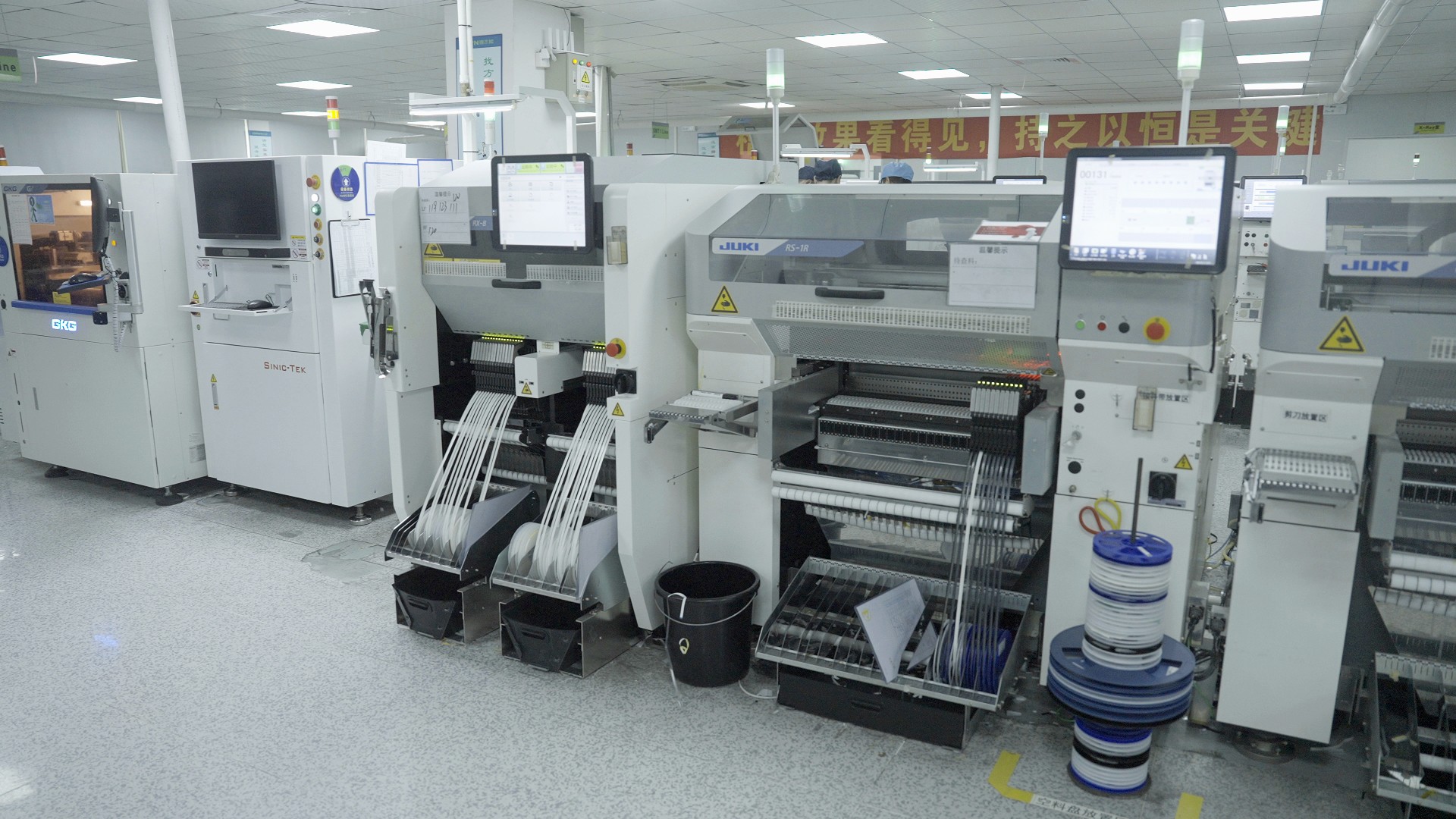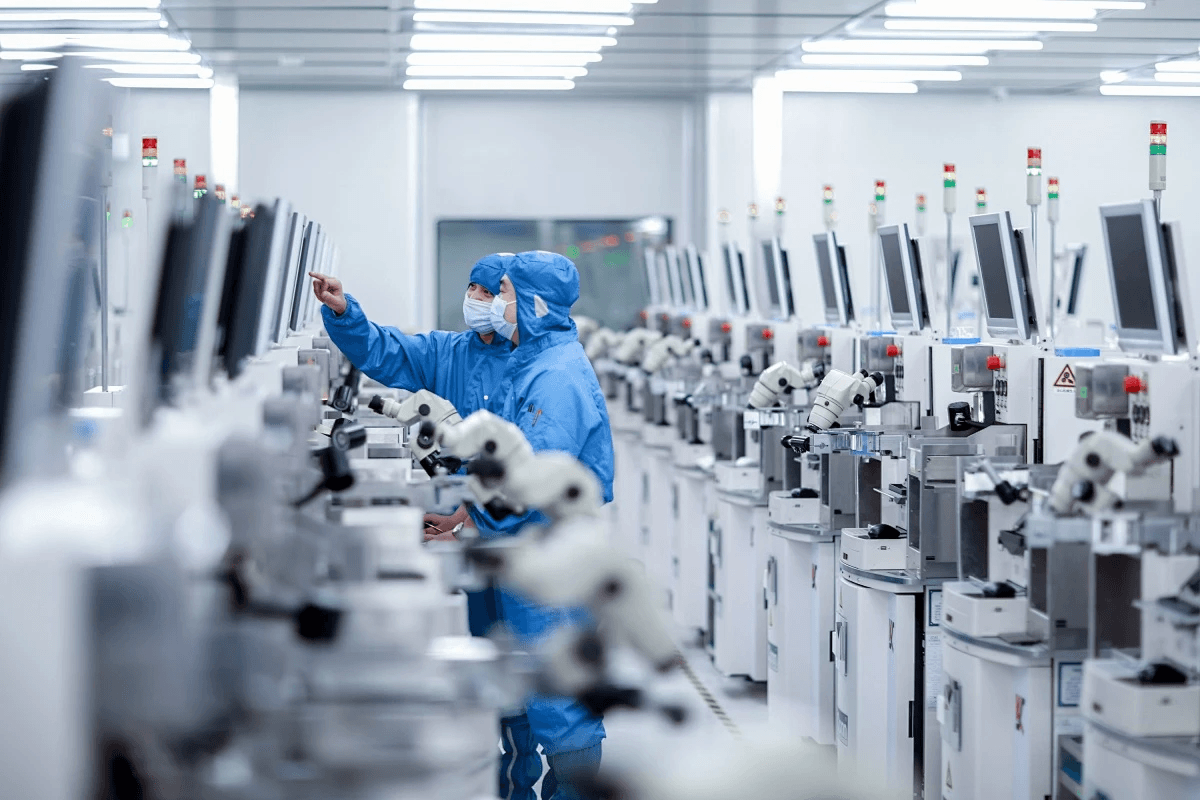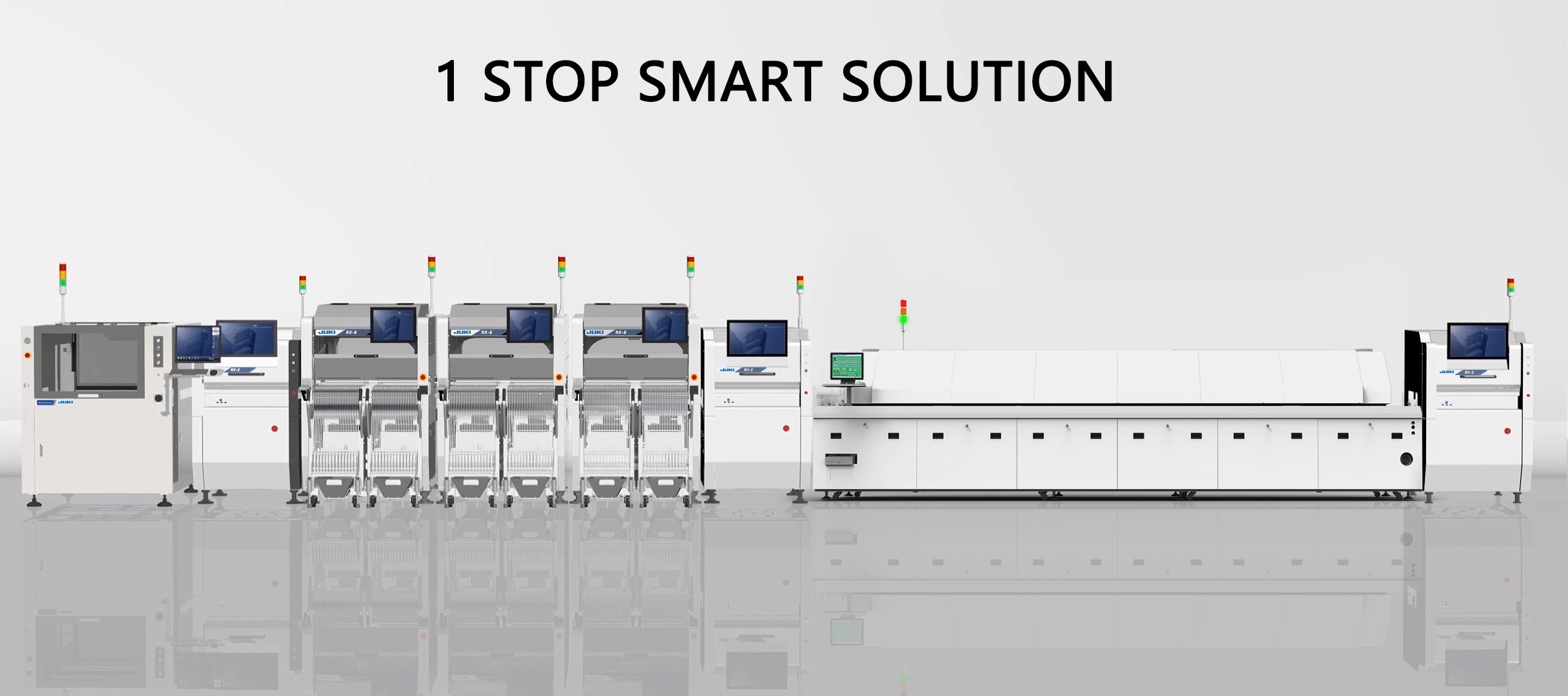Introduction

In the fast-paced world of electronics assembly, surface mount technology (SMT) has become a game-changer, revolutionizing how components are attached to circuit boards. This innovative approach allows for smaller, lighter, and more efficient devices that meet the demands of modern consumers. As we dive into the realm of SMT equipment, it’s essential to understand its significance and evolution in the electronics landscape.
Understanding Surface Mount Technology
Surface mount technology (SMT) refers to a method where electronic components are mounted directly onto the surface of printed circuit boards (PCBs). Unlike traditional through-hole technology, which requires drilling holes into the PCB, SMT enables a more compact design and higher component density. This shift not only optimizes space but also enhances manufacturing efficiency and performance in various applications.
The Evolution of SMT Equipment
Over the years, SMT equipment has undergone significant advancements, evolving from rudimentary machines to sophisticated automated systems. Early surface mount machines were limited in capability and speed; however, today’s cutting-edge SMT machines boast precision placement and enhanced functionality. The evolution of these technologies reflects the growing complexity of electronics assembly and the industry's push towards automation.
Key Players in SMT Technology
The landscape of SMT technology is populated by several key players who have made substantial contributions to its development. Companies like Bensun Technology Co., Ltd., along with others in the field, have established themselves as leaders by providing innovative surface mount machines designed for diverse manufacturing needs. Their commitment to quality and advancement ensures that they remain at the forefront of this dynamic industry.
The Basics of Surface Mount Technology

Surface mount technology (SMT) has revolutionized the electronics assembly industry, offering a more efficient and compact way to mount components onto printed circuit boards (PCBs). Unlike traditional methods, SMT allows for the attachment of components directly onto the surface of PCBs, minimizing space and improving performance. This section will delve into what SMT is, the components commonly used in this technology, and the myriad advantages it holds over through-hole techniques.
What is Surface Mount Technology?
Surface mount technology (SMT) refers to a method where electronic components are mounted or placed directly onto the surface of printed circuit boards. This innovative approach contrasts with older through-hole technology, where leads are inserted into drilled holes on the PCB. By using SMT equipment, manufacturers can achieve higher density layouts and faster production speeds, making it a preferred choice in modern electronics assembly.
Components Used in SMT
In surface mount technology, various components are utilized that differ significantly from those used in through-hole designs. Commonly found parts include resistors, capacitors, diodes, and integrated circuits — all designed for flat mounting on PCBs. These SMT components are typically smaller and lighter than their through-hole counterparts, allowing for more intricate circuit designs and improved electrical performance.
Advantages of SMT Over Through-Hole
The advantages of surface mount technology over traditional through-hole methods are numerous and compelling for manufacturers looking to optimize their processes. Firstly, SMT allows for a higher component density on PCBs due to its smaller size—this means more functionality can be packed into less space. Additionally, using SMT machines reduces production time as they facilitate quicker placement and soldering processes compared to manual or semi-automated through-hole assembly.
Bensun's Role in SMT Equipment

When it comes to surface mount technology (SMT) equipment, few companies stand out like Bensun Technology Co., Ltd. With a commitment to innovation and quality, Bensun has positioned itself as a key player in the SMT technology landscape. Their extensive range of surface mount machines caters to the diverse needs of electronics assembly, ensuring that manufacturers can keep pace with the ever-evolving demands of the industry.
Overview of Bensun Technology Co., Ltd.
Founded with a vision to revolutionize electronics assembly, Bensun Technology Co., Ltd. has become synonymous with reliable and efficient SMT equipment. The company specializes in developing state-of-the-art surface mount technology machines that enhance production capabilities while maintaining high standards of quality and precision. With years of experience under their belt, Bensun continues to push boundaries in SMT technology, making them a trusted name among manufacturers worldwide.
Popular SMT Machines Offered by Bensun
Bensun offers a variety of popular SMT machines designed for different stages of the electronics assembly process. Their flagship models include advanced pick-and-place machines, reflow ovens, and solder paste printers—all integral components in any successful surface mount technology setup. Each machine is crafted with cutting-edge features aimed at maximizing efficiency and minimizing downtime, making them ideal for both small-scale operations and large manufacturing facilities.
Benefits of Choosing Bensun for Electronics Assembly
Choosing Bensun for your electronics assembly needs comes with numerous advantages that set them apart from competitors in the market. Firstly, their commitment to customer service ensures that clients receive tailored solutions that fit their specific requirements in surface mount technology applications. Additionally, investing in Bensun’s SMT equipment translates into long-term cost savings due to their durability and low maintenance needs—making them an attractive option for businesses looking to optimize their production processes while staying ahead in the competitive landscape.
Innovations in SMT Machines

The world of surface mount technology (SMT) is rapidly evolving, with innovations reshaping the landscape of electronics assembly. As manufacturers seek to optimize efficiency and reduce costs, the latest trends in SMT equipment are focusing on enhanced precision, speed, and flexibility. This section delves into these exciting developments that are making waves in the industry.
Latest Trends in SMT Equipment
One of the most notable trends in surface mount technology is miniaturization. As devices become smaller and more compact, SMT equipment must adapt to handle increasingly tiny components without sacrificing performance or reliability. Additionally, there has been a significant push towards modular designs in SMT machines, allowing manufacturers to customize their setups based on specific production needs while maintaining high levels of efficiency.
Another trend is the integration of advanced inspection systems within surface mount machines. Automated optical inspection (AOI) and X-ray inspection technologies are now commonplace, ensuring that every component is placed accurately and functions correctly before moving down the assembly line. These innovations not only enhance quality control but also reduce waste and rework costs associated with faulty assemblies.
Lastly, sustainability has emerged as a key focus area for SMT technology. Manufacturers are increasingly prioritizing eco-friendly practices by developing energy-efficient machines that minimize waste during production processes. This shift not only addresses environmental concerns but also aligns with consumer demand for greener electronics.
Smart Technology in Surface Mount Machines
The rise of smart technology is revolutionizing surface mount technology by enabling real-time monitoring and data analytics within SMT equipment. With IoT (Internet of Things) capabilities integrated into surface mount machines, operators can track performance metrics remotely and make informed decisions based on live data feeds. This connectivity allows for predictive maintenance, reducing downtime caused by unexpected machine failures.
Moreover, artificial intelligence (AI) is playing a crucial role in enhancing the capabilities of surface mount technology machines. AI algorithms can analyze patterns from historical data to optimize production schedules and streamline workflows efficiently. This not only boosts productivity but also ensures that resources are allocated effectively across various stages of electronics assembly.
Finally, automation continues to be a game-changer for SMT processes as manufacturers embrace fully automated solutions for high-volume production runs. By leveraging robotics alongside traditional SMT equipment, companies can achieve unprecedented levels of speed and accuracy while minimizing human error during assembly operations.
Impact of Automation on SMT Processes
Automation has dramatically transformed how surface mount technology operates within manufacturing environments today. The introduction of automated pick-and-place systems enables rapid placement of components onto PCBs (printed circuit boards), significantly reducing cycle times compared to manual methods used previously in electronics assembly processes. Consequently, this leads to faster time-to-market for new products.
Additionally, automation enhances consistency throughout production runs by standardizing processes across multiple shifts or locations without compromising quality standards inherent to surface mount technology applications. Such reliability fosters trust among clients who rely on high-quality electronic products consistently delivered at competitive prices—a win-win situation!
However, it’s important not to overlook potential challenges posed by increased automation levels within SMT operations; skilled labor shortages may arise if workforce training does not keep pace with advancing technologies being deployed daily across industries worldwide! Ensuring employees remain equipped with necessary skills will be vital moving forward into an ever-evolving landscape driven largely by innovation at every turn!
Choosing the Right SMT Equipment

Selecting the right SMT equipment is crucial for optimizing electronics assembly processes. With a plethora of options available in the market, it can be daunting to determine which surface mount technology machine best suits your needs. This section will guide you through essential factors to consider, provide comparisons of different SMT machines, and discuss cost-effectiveness and ROI in surface mount technology.
Factors to Consider When Selecting SMT Equipment
When diving into the world of surface mount technology, there are several key factors to keep in mind while selecting your SMT equipment. First and foremost, assess your production volume; high-volume production may necessitate more advanced surface mount machines that can handle greater output efficiently. Additionally, consider the types of components you'll be working with; certain SMT machines excel at handling specific sizes or types of components better than others.
Another important factor is the level of automation you desire in your electronics assembly process. Automated systems can significantly reduce labor costs and improve accuracy but may require a higher initial investment compared to manual systems. Finally, don’t overlook after-sales support and service; having reliable support can make all the difference when integrating new surface mount technology into your workflow.
Comparing Different SMT Machines
Once you’ve established what you need from your surface mount technology equipment, it’s time to compare different SMT machines on the market. Look for features such as placement accuracy, speed, and flexibility; these elements are often pivotal in determining how well an SMT machine will perform under various conditions. Additionally, read reviews from other users—real-world experiences can provide valuable insights that specifications alone might not reveal.
Don't forget about compatibility with existing systems or software within your facility; choosing a machine that seamlessly integrates with your current setup can save both time and money during implementation. Furthermore, evaluate maintenance requirements—some machines may require more frequent servicing than others which could impact long-term operational efficiency.
Cost-Effectiveness and ROI in Surface Mount Technology
Investing in surface mount technology machinery is not just about upfront costs but also about understanding long-term value and return on investment (ROI). Calculate potential savings from increased efficiency and reduced labor costs when using modern SMT equipment compared to older methods like through-hole soldering techniques. A thorough analysis should include expected lifespan of the machine as well as its energy consumption—both factors contribute significantly to overall cost-effectiveness.
Moreover, consider how quickly you can expect a return on investment based on projected production increases or improvements in quality control leading to fewer defects during electronics assembly processes. By carefully weighing these aspects against purchase price, businesses can make informed decisions that align with their financial goals while embracing cutting-edge smt technology.
Challenges in SMT Implementation

Surface Mount Technology (SMT) has revolutionized electronics assembly, but the implementation of SMT equipment comes with its own set of challenges. As manufacturers strive to adopt advanced SMT technology, they often encounter issues that can hinder productivity and efficiency. Understanding these challenges is crucial for companies looking to optimize their operations and fully leverage the benefits of surface mount machines.
Common Issues in Electronics Assembly
One of the primary issues faced during electronics assembly is the complexity associated with surface mount technology. The miniaturization of components means that precise placement is essential, which can lead to difficulties in soldering and alignment if not executed correctly. Additionally, managing the thermal profiles for different surface mount technology machines can be tricky, as improper heating can result in defects such as solder bridging or component damage.
Another common challenge arises from the rapid pace at which technology evolves. Keeping up with advancements in SMT machines and ensuring that staff are well-trained on new equipment can be daunting for many organizations. Furthermore, supply chain disruptions may lead to shortages of specific components required for SMT processes, complicating production schedules and increasing costs.
Solutions to Overcome SMT Challenges
To tackle these challenges effectively, companies should invest in robust training programs for their workforce focused on surface mount technology best practices. Regular workshops and hands-on training sessions can equip employees with the skills necessary to handle complex SMT equipment confidently. Additionally, utilizing advanced software solutions for design verification can help identify potential issues before they arise on the production floor.
Embracing automation within electronics assembly processes is another effective way to mitigate common problems associated with SMT implementation. Automated optical inspection (AOI) systems and other smart technologies integrated into surface mount machines can enhance quality control by detecting defects early in the process. Lastly, building strong relationships with reliable suppliers ensures a steady flow of high-quality components necessary for seamless production.
Future Outlook for SMT Technology
The future outlook for surface mount technology is promising as innovations continue to emerge at a rapid pace within this field. With ongoing advancements in machine learning and artificial intelligence being integrated into SMT equipment, we can expect significant improvements in efficiency and accuracy during electronics assembly processes. Moreover, as manufacturers increasingly adopt sustainable practices, eco-friendly materials used in surface mount technology will likely gain traction.
As industries push toward greater automation and digitalization, we will see a rise in smart factories equipped with state-of-the-art surface mount machines capable of real-time monitoring and data analytics. This evolution will allow companies to respond swiftly to market demands while minimizing waste and maximizing ROI from their investments in SMT technology. Ultimately, embracing these changes will position businesses favorably within an ever-competitive landscape.
Conclusion
In the rapidly evolving landscape of electronics assembly, surface mount technology (SMT) has emerged as a cornerstone of modern manufacturing. Its ability to facilitate smaller, lighter, and more efficient devices makes SMT technology not just relevant but essential today. As industries demand higher performance and reliability, the significance of surface mount machines becomes even more pronounced.
Why SMT Technology Matters Today
Surface mount technology is pivotal in meeting the increasing demands for compact and efficient electronic devices. Unlike traditional methods, SMT equipment allows for greater component density on circuit boards, which translates into smaller products with enhanced functionality. This capability not only improves performance but also reduces production costs and time—a win-win for manufacturers aiming to stay competitive.
How to Stay Ahead with SMT Innovations
To remain at the forefront of electronics assembly, companies must embrace innovations in SMT technology. Keeping an eye on advancements such as smart surface mount machines can provide significant advantages in efficiency and accuracy. Moreover, investing in cutting-edge surface mount technology equipment ensures that businesses are equipped to handle future challenges while maximizing their return on investment.
The Future of Electronics Assembly and SMT
The future of electronics assembly is undeniably intertwined with the evolution of surface mount technology. With ongoing advancements in automation and AI integration within SMT machines, we can expect even more streamlined processes that enhance productivity while minimizing errors. As we look ahead, embracing these innovations will be crucial for companies seeking to thrive in an increasingly competitive market driven by technological progress.
